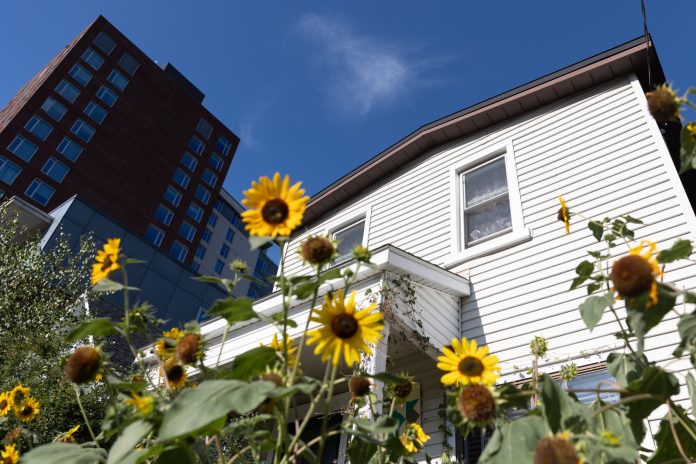Poor indoor air quality — a particular problem as we hunker down for winter — can cause a host of health problems, from a simple dry throat and itchy eyes to more serious ailments like asthma, heart disease, cognitive deficits and even cancer, according to the United States National Institute of Health Sciences.
Cooking, cleaning products, mould, off-gassing from furniture and construction materials, and radon are among the culprits for poor indoor air quality, along with low humidity caused by household heating systems.
We spend a staggering 90 per cent of our time indoors, according to Environment Climate Change Canada, so what can we do to ensure good air quality in our homes?
“That’s where ventilation comes in,” says Roy Nandram, owner of Ottawa’s RND Construction, a multi-award-winning and eco-conscious custom builder and renovation company. “Your house needs to be well ventilated and the most interesting way to ventilate is with an energy recovery ventilator.” An energy recovery ventilator (ERV) and similarly a heat recovery ventilator (HRV) pulls fresh air into the home that is warmed by the old air that’s being expelled. An ERV also extracts humidity in winter to recirculate it or exhausts it in summer.
Nandram notes that new homes today are so airtight that an HRV or ERV is needed “so we can get the bad air out and bring the fresh air in.… You could open a window, but then you’re pouring the energy outside.”
While older homes don’t have that kind of airtightness — “you get a lot of air exchange naturally,” he says — owners of those homes do need to watch for condensation and mould.
Here are some tips for improving indoor air, even if your home already has an HRV or ERV system.
Kitchen & bathroom fans
Clean or replace the filter on your range hood as often as your owner’s manual suggests. Clean bathroom ceiling fans at least twice a year, a simple DIY task that will improve their performance and lifespan. Check YouTube if you’re unsure how to maintain filters and fans.
Heating system
Maintaining your furnace, HRV and ERV, including any in-system humidifiers, is essential. That includes an annual furnace inspection and regular replacement of filters. Again, YouTube is a good source for how to do it.
Carpets & rugs
Like upholstered furniture, carpets and rugs trap dust, pet hairand dander, and other foes of good air quality. Use a vacuum with a HEPA filter for best results and occasionally shampoo floor coverings and upholstered furniture.
Drapes & bedding
Wash these items regularly (sheets weekly, pillows every six months, drapes as needed) to control dust and other irritants. Dust- and allergen-proof pillow, mattress and box spring coversmay be a wise investment.
Humidity
Daily household routines like showering and cooking can push up humidity levels, encouraging mould during the winter. Adjustments to your ventilation system may solve the problem (check your owner’s manual).
Carbon monoxide & radon
Often called “the silent killer,” carbon monoxide is a potentially deadly invisible, odourless, colourless gas created when natural gas and other fuels burn incompletely. Ontario law requires that homes with fuel-burning appliances like furnaces and fireplaces have detectors near all sleeping areas. The law also applies to residences with attached garages because of the danger from car exhaust. Test both your smoke and carbon monoxide alarms once a month.
Radon, also invisible, odourless and tasteless, is a radioactive gas that occurs naturally and can enter a home through cracks in the foundation, sump pumps and elsewhere. Almost one in 10 Canadian homes have radon levels above the recommended limit, according to Health Canada, which also notes that it is the No. 1 cause of lung cancer in non-smokers.
“You need to get a radon test to know where you are before you decide what to fix,” Nandram says. Check ottawapublichealth.ca for testing information.
Air purifiers
Portable air cleaners can help improve indoor air quality. They are best used in the rooms where you spend a lot of time, like your bedroom. Select one certified by the Association of Home Appliance Manufacturers.
More ideas and resources
For more tips on improving the air in your home, visit the federal government’s page on “indoor air quality in your home” at canada.ca.
Patrick Langston is the co-founder of All Things Home Inc. The veteran journalist has covered the Ottawa housing industry since 2008.
